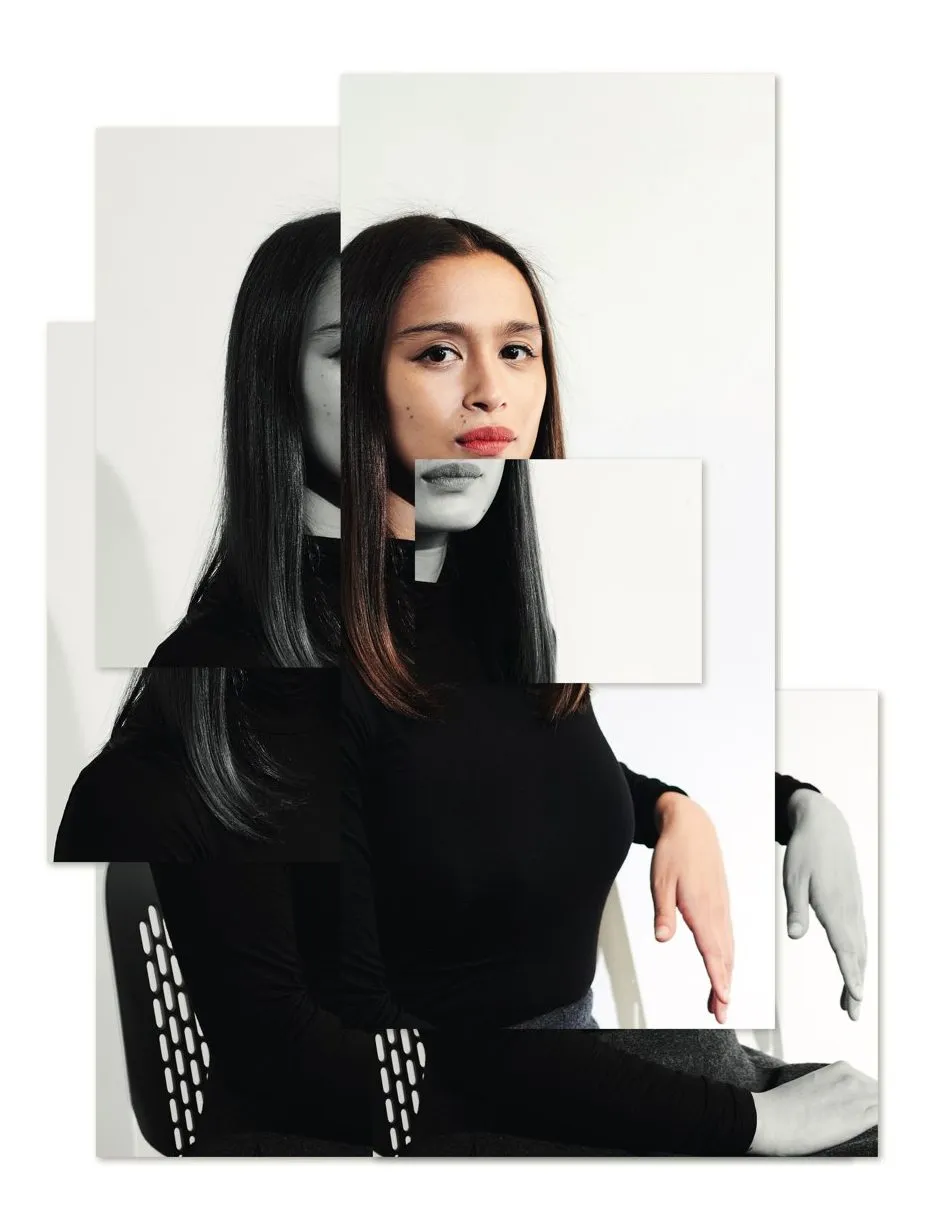Dr Camilla Pang was diagnosed with autism spectrum disorder when she was eight years old. She struggled to understand the world around her, and once asked her mother if there was ‘an instruction manual for humans’.
Her first book, Explaining Humans, is a guide to navigating life, love and relationships using the lessons she’s learned in her scientific career so far, drawing on examples from how the different proteins in the human body can reflect the different roles in a social group, to the way how light refracts through a prism helping her to break down fear into something manageable.
Camilla completed her degree in biochemistry at the University of Bristol, and went on to gain a PhD in bioinformatics from University College London. Her current work uses disease and cancer data, along with machine learning methods, to find patterns that can be used in healthcare and lead to the development of therapies.
Camilla is an active volunteering researcher for cancer research groups at the Francis Crick Institute in London, and also works on her own projects within psychology, science communication and the arts.
Explaining Humanswon the 2020 Royal Society Insight Investment Science Book Prize.
Read more interviews:
- This is your brain on space: how gravity influences your mental abilities
- The quest for quantum gravity: why being wrong is essential to science
- Chris Packham on overpopulation: "The first thing I’d do is globally emancipate and educate women"
In what way do you struggle to communicate?
Well, firstly open-ended questions aren’t my forte, I think that’s quite important to know. This whole book highlights why open-ended questions are hard; I’m on the autistic spectrum and I also have ADHD, but that doesn’t define me. I don’t fall victim to my neurodiversities. They empower me and I wouldn’t have been able to do my PhD or write my book, Explaining Humans, without them.
What is the biggest thing that has science taught you about humans?
Science is still teaching me. It’s not a concrete thing and this is one of the reasons why I’m in love with it. It’s something that is ever-evolving, and so are people.
It’s very fluid, that’s one of the lessons it has taught me. I like to be on the cutting edge of science, and I think that inadvertently makes me more fluid as a person, and less rigid.
Where does science intersect with how we make decisions?
Take machine learning [using patterns in data to generate algorithms that can predict future outcomes]; it’s inherently based on psychology. That’s what we’re trying to do, to mimic the human brain and then scale it up so we can gather some kind of insight and intuition.
Machine learning uses what we know to anticipate what we should do in unknown circumstances, AKA the future. They aim to replicate the convoluted logic and decision-making processes that happen at smaller scales, but ever so accurately, in the human brain.

But currently, as much as artificial intelligence can iterate data until the cows come home, humans are much more superior, albeit slower, at decision making.
Our decisions are a tad more involved and layered than computers. Neurotypically, we don’t refresh our biases every time from random. Rather we gather them through experiences, errors and successes, which fine-tune our intuition to infer outcomes.
How does your knowledge of machine learning help you make decisions?
Imagine I am a committed Uber Eats user and have a strong sense of routine (which isn’t too far off). The app in question may predict a suggestion and cater – quite literally – to my needs, the evening before I’ve even opened the app. The same logic could be paralleled in the attempt to anticipate the whims and woes of close friends or partners, which is more of an experienced, convoluted and recursive process.
Or in decisions that concern many people. Things like; do I, or do I not react to when someone is really annoying me? Or, what kind of thing do I say when someone needs a hug? These decisions are nuanced and require some level of known experience, some learning from mistakes and a degree of self-reflection.
This imitates a more snazzy version of AI: deep learning. Deep learning is an adaptive, reinforced training, an expertise acquired purely through its freedom and ability to learn from its mistakes. Although, deep learning operates in an accelerated and low pressured environment, where housework and the fear of human judgment doesn’t get in the way.
So, is there really any science behind my failed relationships?
I don’t like the word ‘failed’. I think that’s a very binary way of thinking. I mention this in chapter one of Explaining Humans, it’s box thinking, and you’re either one or the other. You fail or you succeed. But evolution is a bit more flexible than that, so a failure in one context is often a treasure in the next.
That’s actually kind of nice, because it gives us that wiggle-room we need and that open-mindedness to say, you know what? Let’s cut ourselves some slack. If it’s not working, it’s not working.
We are all evolving, and to be able to evolve together is great, but to evolve separately and through different means is also great. It’s our energetic potential as people.
Read more about autism:
You’ve mentioned neurodiversity, which is often compared against neurotypical. Can you explain what these terms mean?
People commonly refer to ‘neurotypical’ as someone who is not yet diagnosed with a mental health variance. I don’t call it disorder, because I believe it is clearly imposed by environment.
Neurodiversity is a term that is quite closely related to autism, ADHD, bipolar and schizophrenia; all those different types of psychological impositions that can affect you. What you find with these mental health variances is that a lot of the struggles that people have, are mainly due to the intolerances of their environment.
If left alone, I’m normal. I’m fine. Happy as Larry. But if I had to sit at my desk in a certain way all day, I’d go absolutely nuts. I actually sit under my desk – I’ve got a standing desk – and I read there. The people at my work are very accepting of that. So, what I’d want everyone to know about neurodiversity, is to just accept and embrace it.

Honestly, I think everyone is neurodiverse. Even though you try to be square, you’re not square. I’m very sorry to tell you, it doesn’t exist. You are a species on this planet and you are subject to evolution. You’re going to evolve but to admit to that, and to behave as your natural self, is sometimes quite hard with these kind of social constraints.
So, neurodiversity is something we’re all faced with. Some of us just know how to hide it better, because they either feel it less, or maybe because they’re more scared. To be neurodiverse and to show it, that is actually very brave, and takes a lot of guts.
You have to know how to train it, to use it, and not be hindered by you being an odd shape. It’s easy to feel squeezed and trapped. I’m speaking from my personal experience and everyone who has a diagnosed mental health variance will have their own experience.
But being adaptable to your own needs is key, and I think that can be said for everyone, not just those who are neurodiverse.
Why is autism closely linked with ADHD?
They are a marriage made in heaven, but they live in hell. They are counterparts. To be honest, ADHD’s a kind of chaotic, unpredictable, sporadic, wildfire that spins outwards, and it’s everything that makes you feel alive. It’s messy, and it’s not routine. It’s fluid.
Autistic spectrum disorder is more rigid. More focused. It’s like routine. It’s very introspective. From my experience, that is.
They save each other a lot of the time because they’re a yin and yang. Most of the time I feel like I’m a third wheeler. I really do. I’m mediating both of these psychologies simultaneously, and I’m like, “I just want to make a cup of tea.”
Read more about the brain:
- Exercise and the brain: why moving your body matters
- Heading ban: are footballers putting themselves at risk of dementia?
But the good thing is that they do complement each other. I go into hyper-focused mode, and I’ve also got my Asperger’s to push that through further, so I get stuff done fast. ADHD can make you feel lost, and so can autism, but together, somehow, you find your way through. It’s almost like magic.
I think it’s very important to highlight the intersection of anxiety. One can save the other, but also, they can act together to create a really powerful anxiety. That can be hard to deal with. You don’t know what you’re going to be anxious about that day, but you know that your mind is spinning in both directions. You just have to learn to train it. It’s energy, at the end of the day.
How do you feel about the way autism is portrayed in the media?
It’s not quite accurately represented in terms of how varied autism can be. It’s very male-orientated. It’s a very white culture, and there are lots of heads banging on walls. And I think that’s due to the fact that we don’t know what [autism] looks like in any other form because it’s very hard to diagnose.
It’s symptomatic, and it’s very, very varied. People who have it, particularly females, are known to mask their symptoms, so trying to get it out of them is really hard. Lucky for me, I was diagnosed at the age of eight or nine.

But for example, when someone says to me, “Oh, Millie, you don’t look autistic!” I know that they mean well, so I don’t make a fuss. I give an indifferent answer that I’ve rehearsed, obviously.
But it’s degrading to say I don’t look autistic because it’s not something that I have; it’s something that I am. This is my human shape. I am autistic, and I have a different shape. I experience life differently, to the point where it can hinder, but it can also enhance my experience.
I’m really hoping that this book sheds a light on how varied [autism] can be, but also anchor it down to a common psychological route that explains why you are feeling a) that little bit weird or b) out of place or c) to explain the human that you are.
Why did you choose to write Explaining Humans now?
Explaining Humans is my attempt to write a manual from the pieces of information I’d assembled since I was a child, but I didn’t know I was writing it. It started with the notes I had collected, and like bobbles on a jumper, you’re a little bit embarrassed by them, but they are inevitable and I couldn’t not write it. I had to write to survive, and assembling these notes enabled me to decode and connect with humans.
It’s also an attempt to make science visible for people, as it actually made people visible to me. I can be myself with science, and it’s something that I want to share with others because it’s how I understand them.
Thinking about it, I used to have visions of myself, wanting to give it to my mother when I was little. So I could one day be like, “Here mum, this is what’s happened.
This is why I couldn’t communicate, and now I can.”
Explaining Humans: What Science Can Teach Us about Life, Love and Relationships is out now (Viking, £14.99).

